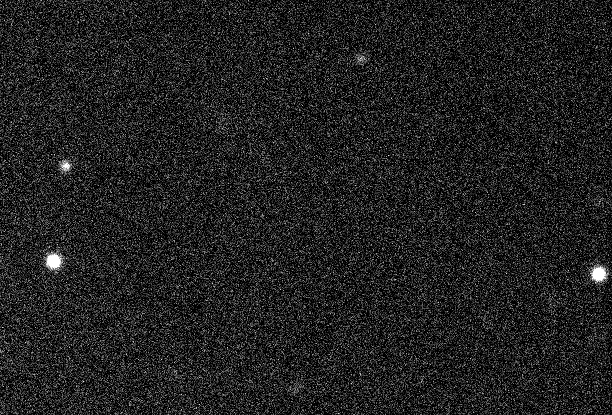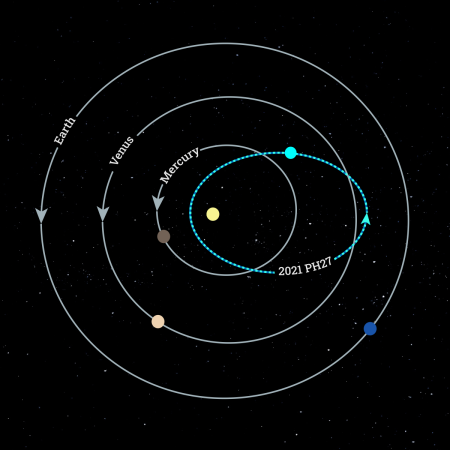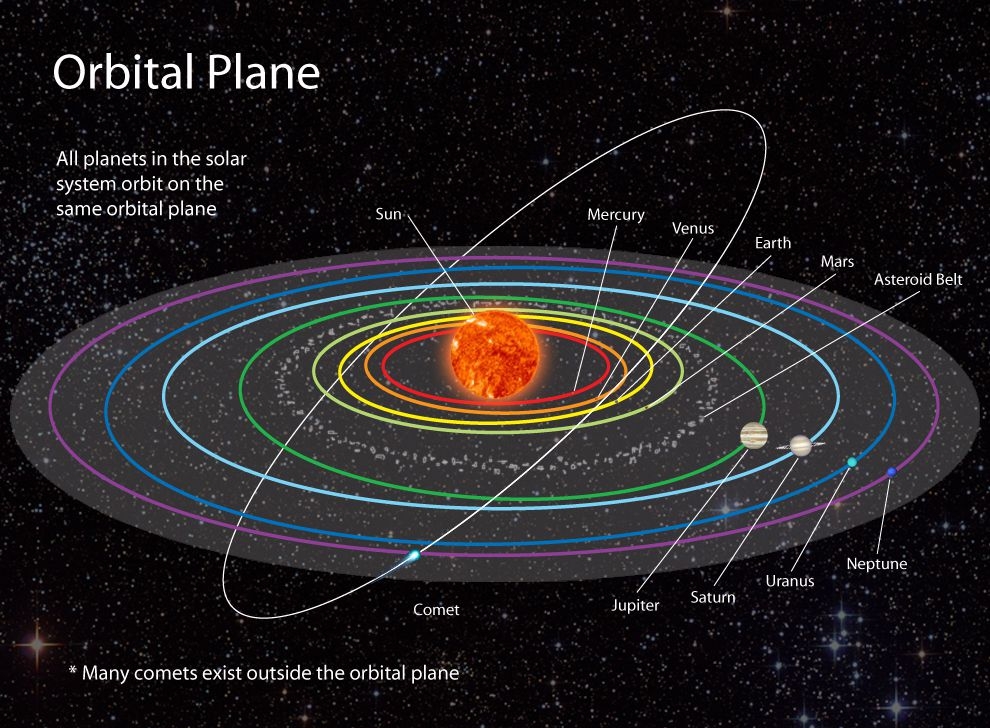Mercury isn't the closest object to the Sun anymore
Mercury, Venus, Earth, Mars, Asteroid Belt – this is the Inner Solar System we are all familiar with. The recently discovered asteroid 2021 PH27 disrupts this picture with its excentric orbit that brings it closer to the Sun than any other known body in our Solar System.

On the night of the 13th of August 2021, observations searching for small asteroids were conducted, using the Dark Energy Camera (DECam) at the Cerro Tololo Inter-American Observatory (CTIO) in Chile, which normally targets distant galaxies and clusters. Following this session, researchers recognised a new asteroid in the data; the occurrence was analysed by other astronomers at the University of Hawaii, and predictions could be made on the position of the object during subsequent nights.
On the 14th of August, the DECam paired up with the Magellan Telescopes at the Las Campanas Observatory, also in Chile, to spot the trouble-making asteroid again. On the 15th, additional measurements were taken, including with South African telescopes part of the Las Cumbres network. All these subsequent investigations show that 2021 PH27 is following an extremely elliptical orbit, which in practice means that its path goes from between Mercury’s orbit and the Sun at its closest approach to the Sun, and beyond Venus’ orbit at its most distant.

There are two possible explanations for the asteroid’s origin: it may have come from the Asteroid Belt, from which it was dislodged by gravitational effects from the inner planets - e.g. two of them aligning with it, causing a strong attraction. On the other hand, it could well be that 2021 PH27 used to be a comet from the outskirts of the Solar System, a theory supported by the fact that its orbital inclination is 32° (with respect to the plane in which the Earth orbits the Sun, the ecliptic). If this is indeed what happened, it would have been gravitationally captured by the inner planets to become the small body with the shortest orbital period of all asteroids at 113 days, and resembling an asteroid by having “burned up” all the ice which as it evaporates when a common comet approaches the Sun, leaves behind the comet tail, the coma.

In terms of 2021 PH27’s future, there are again multiple possible scenarios. It is likely that its orbit is unstable, i.e. further gravitational disturbances could cause the body to fall into the Sun, or crash into one of the innermost two rocky planets. It could also become a rogue asteroid by being gravitationally ejected from the Solar System. At the same time, its proximity to the Sun implies that 2021 PH27 could eventually break into pieces because of the strong gravitational pull as well as the incredibly high temperatures it gets exposed to. It’s this same proximity to our star that is a challenge for astronomers trying to spot these interior asteroids. Because of the aforementioned effects, such asteroids usually don’t have long lifetimes. What’s more, the glare of the Sun makes direct imaging challenging. Yet, understanding these bodies, their orbits and their properties is crucial to predict and mitigate consequences of a collision – discussions about deflecting asteroids are a hot topic within the scientific community.
From a terrestrial point of view, 2021 PH27 is now entering the part of its orbit where it’s “behind” the Sun. It will be visible again at the start of 2022, where further observations will help answer all the questions this discovery raises and until then, astronomers will be thinking of an official name for this unusual interior asteroid.
Cover Image: Artist's impression of 2021 PH27 with Mercury in the background, CTIO/NOIRLab/NSF/AURA/J. Da Silva
Image Credits:
1 - Images of 2021 PH27, CTIO/ NOIRLab/NSF/AURA/J. Da Silva
2 - Víctor M. Blanco 4-meter Telescope at CTIO, CTIO/NOIRLab/NSF/AURA/R. Sparks
3 - 2021 PH27's orbit, K. Cain/S. Sheppard, courtesy of the Carnegie Institution for Science
4 - Orbital Planes, T. Gunther for National Geographic
